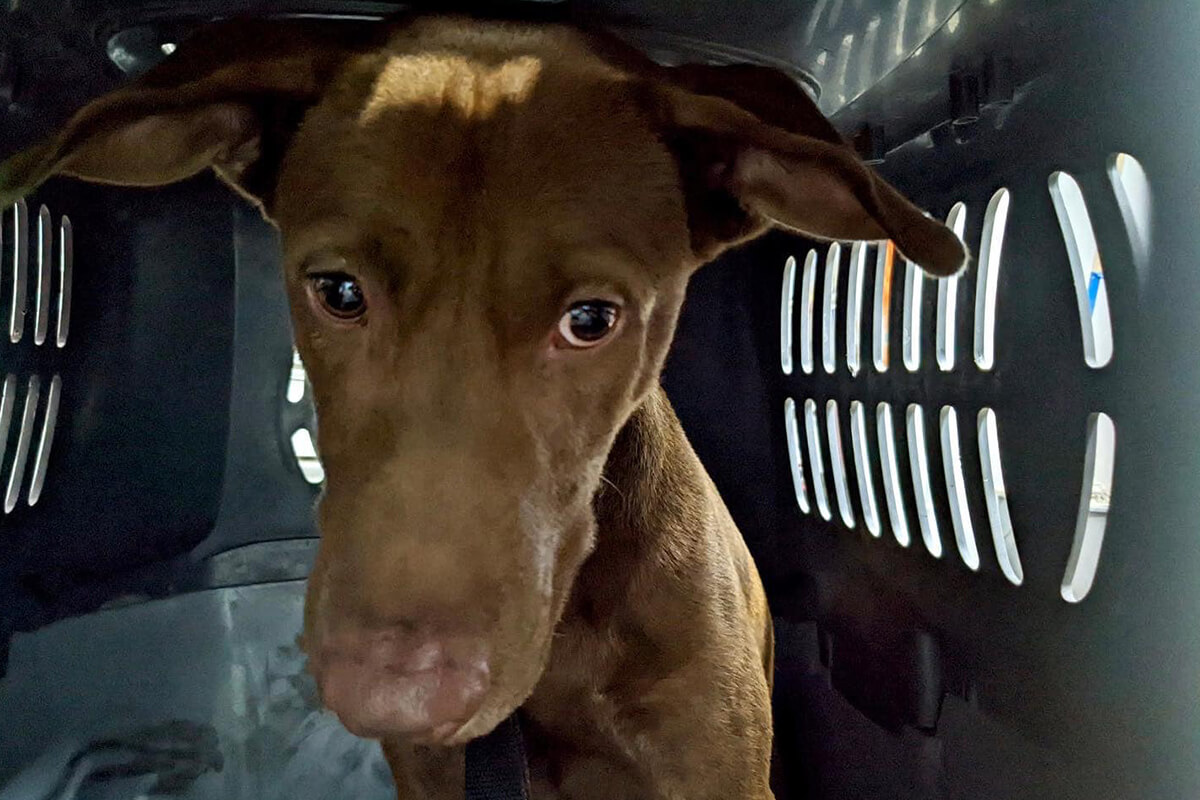Does your furry friend hate going to the vet? Does your dog tremor and try to escape when you turn into the parking lot of the vet clinic? Do you dread taking your pet to the vet? If so, you are not alone. The majority of our pet dogs do face some form of anxiety and stress1 which can make the experience of going to the vet clinic an unpleasant one for both you and your pet.
Although some dogs may not mind being examined, restrained, or poked, most dogs display subtle signs of stress that are often overlooked. Common signs of anxiety or stress include panting, yawning, whining, tail tucked between their legs, ears flat to the back, nose lick, dilated pupils, and scratching when there is no itch2.

However, there are things you can do to make vet visits less stressful for your pet and aim to experience a Fear Free veterinary visit. Fear Free visits do not necessarily mean that your pet will never experience anything uncomfortable; instead every effort can be made to reduce fear, anxiety, and stress arising from the examination and procedures performed.
One thing you can do to make vet visits more comfortable for your pet is to teach them how to give consent to being handled. This means teaching your dog to station, which means having four paws on a mat or resting their nose or paw on an object depending on which body part needs to be checked. This behaviour allows your dog to give consent for procedures while stationing.

Muzzle training3 is also an important skill to master for the safety of the veterinary team. If your dog voluntarily places their head into a muzzle, it can help keep them and the veterinary team safe.
To make the trip to the clinic less stressful, give yourself plenty of time to prepare your dog. You can spray a bandana with a calming pheromone spray or lavender, play calming music, and make sure the car is at a comfortable temperature. Speak to your vet before the visit and request anti-motion sickness medicines and calming nutraceuticals or pharmaceuticals if necessary4.
When you arrive at the clinic, have an obvious tag attached to your dog or leash if they need space away from other dogs or people. Inform the veterinary team of any pertinent information about your dog’s emotional response, such as if they prefer females or males, or if they prefer to be examined on the floor rather than on top of the examination table.
Remember to bring plenty of high-value reward treats and a favourite toy to the clinic to reward your pet for good behaviour. If your pet has a positive experience at a clinic, they will be less fearful the next time they visit.
In conclusion, with a little preparation and effort, vet visits can be less stressful for your pet, making it easier for them to receive the necessary care they need. As a pet owner, you can help make the veterinary visit fear-free, so don’t give up!
BVSc (Hons), Certified Veterinary Acupuncturist
Elite Status Fear Free Certified Veterinarian
References:
- Döring D, Roscher A, Scheipl F, Küchenhoff H, Erhard MH. Fear-related behaviour of dogs in veterinary practice. The Veterinary Journal, 2009;182(1):38-43.
- Feyrecilde. M. Dr. Dolittle Is on Duty! Communicating with Animals the Fear Free Way. Wild West Vet. 2019: Oct 23-26.
- Lees, R. From Happy Visits to Nutraceuticals: Using Cooperative Techniques in the General Practice Setting. Chicago Vet 2022 May 12-13.
- Riemer S, Heritier C, Windschnurer I, Pratsch L, Arhant, C, Affenzeller N. A review on mitigating fear and aggression in dogs and cats in a veterinary setting. Animals, 2021;11(1):158.



